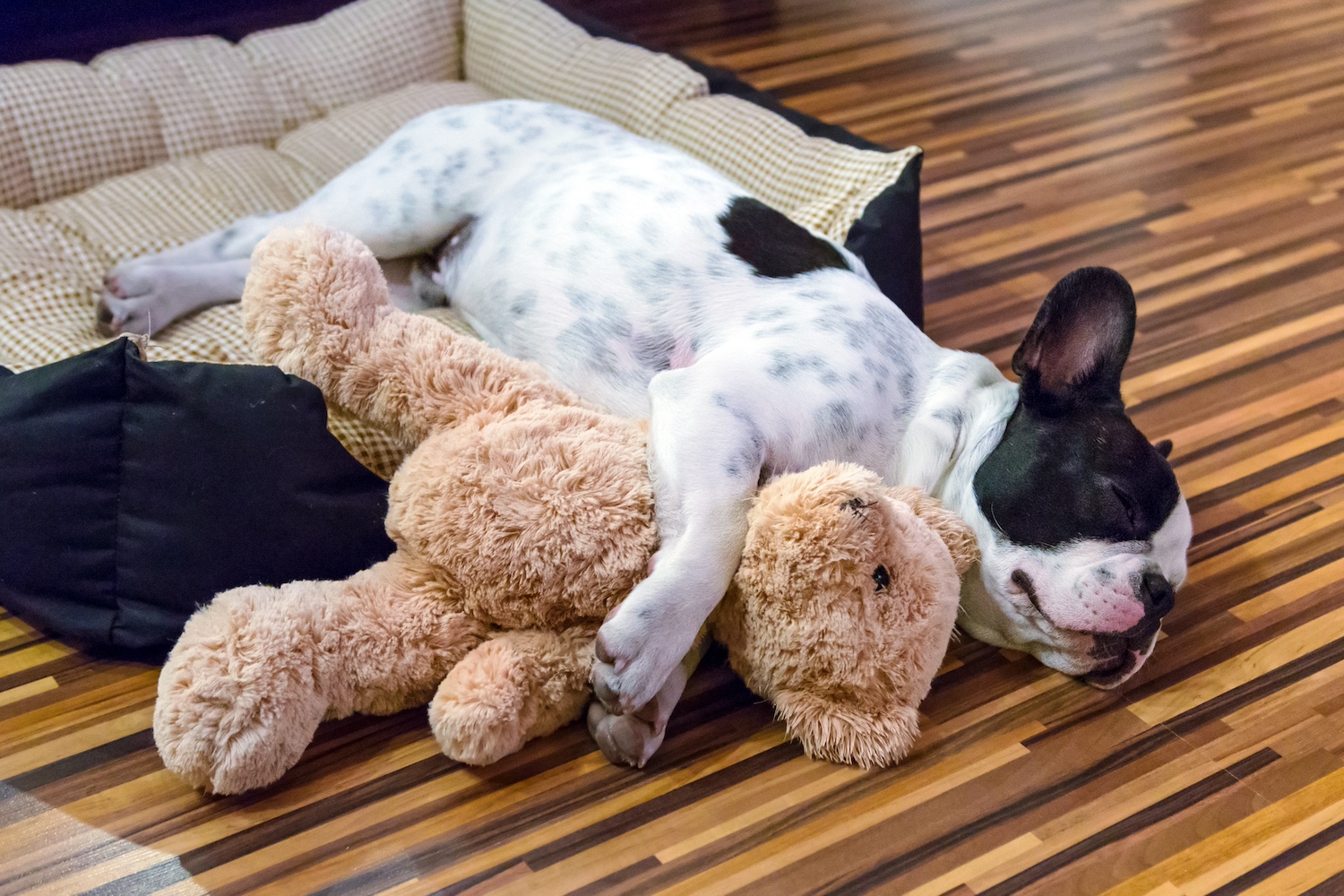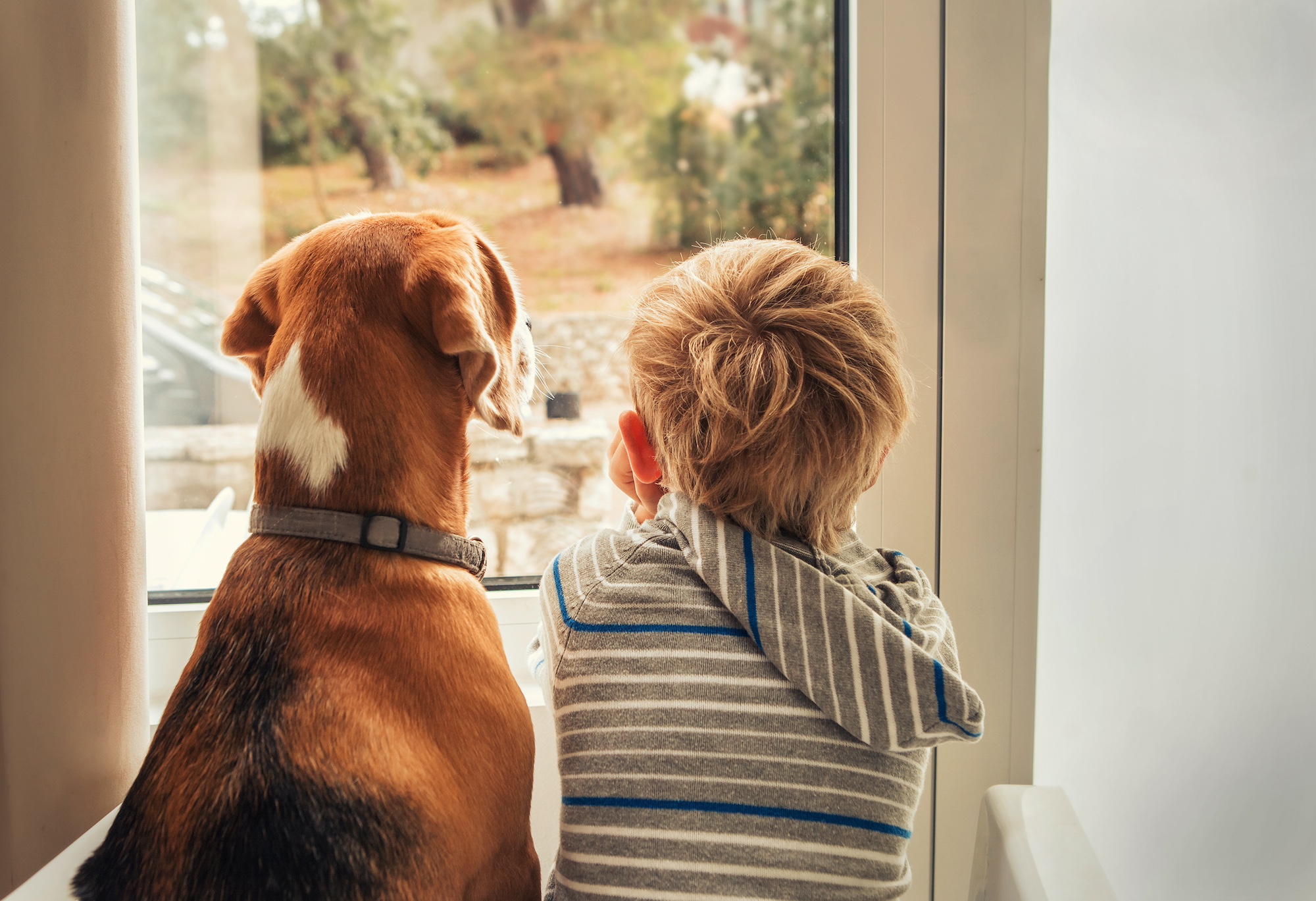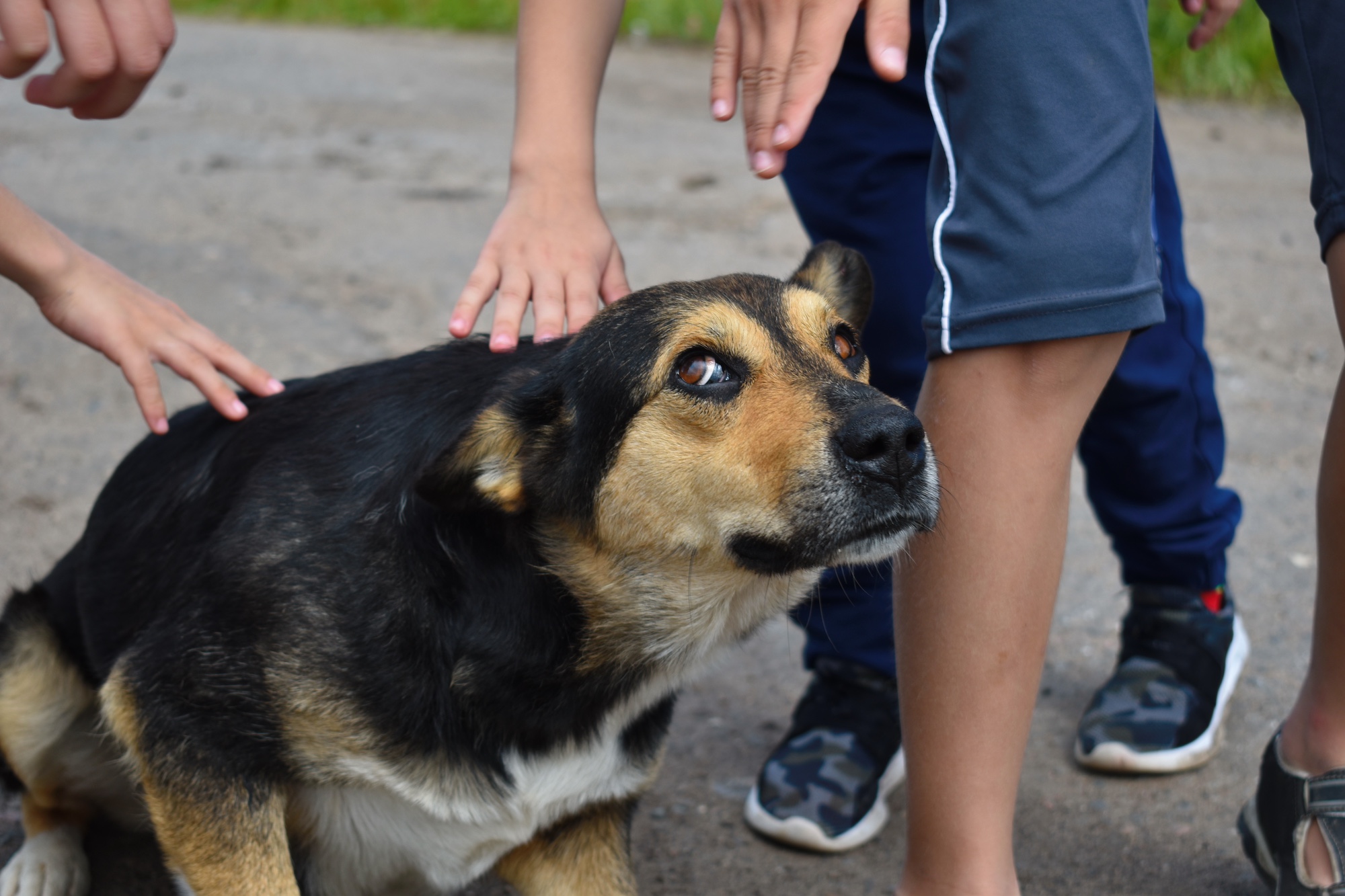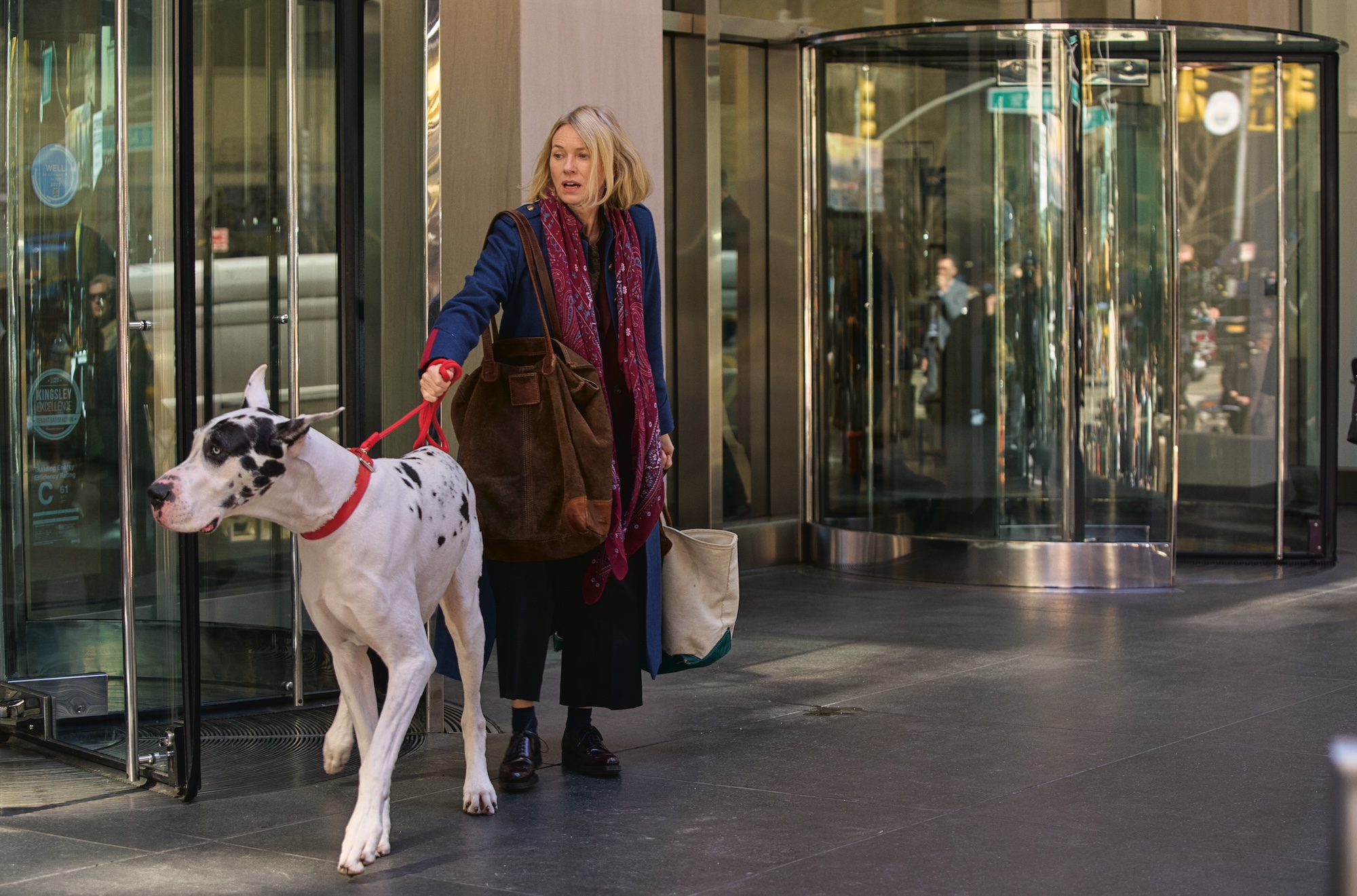Many children love dogs. Parents whose kids ask “Can I have a dog?” know this, as do dog people approached by children who ask a lower-commitment—but still sometimes high-stakes—question: “Can I pet your dog?” And, of course, kids and dogs can be good for each other if they practice mutual understanding and respect. Kids with dogs may get more exercise than those without them, and may be less likely to develop food allergies. And dogs who are treated well by children benefit from an additional playmate and caretaker.
But because children and dogs often lack the judgment that many (though not all) adult humans possess, it can be tricky to navigate their interactions with one another. And, if they go wrong, both parties can suffer short- and long-term physical and mental consequences. According to the American Veterinary Medical Association, children are the most likely victims of dog bites in America. And dogs who’ve bitten children can end up rehomed or even euthanized—so it’s important to do everything possible to keep dogs and children safe when they interact. One key precaution is to supervise children and dogs whenever they’re together.
For more details, we sought out experts’ advice on how dog people can maximize the likelihood of positive child-dog relationships. Here are the guidelines they say to keep in mind.

Don’t make a dog interact with a kid if they don’t want to
This is a simple rule, but one that people don’t always follow either in their homes or out in the world.
Kids may not be aware of this important rule unless you tell them about it. “From the very beginning, it should always be taught to a child… you never approach a dog without asking the owner first,” says Dr. Lori Evans, a psychologist in New York City.
And, of course, they should wait for the answer—asking “Can I pet your dog?” while one’s hand is already three-quarters of the way to the dog is not really asking.
And, while it can be uncomfortable to say “no,” dog owners should do so if it’s in their dogs’ best interests. Maddie Messina, applied animal behaviorist and founder of Paws for Thought Dog Training in New York City, recommends a method that can buy you a little time and space to refuse an enthusiastic child’s inquiry about petting your dog: Toss a treat away from the approaching child. That way, you’re guiding your dog away from the kid, giving said dog a reward, and giving yourself a chance to take a breath and say “Sorry, but he doesn’t like being petted by strangers.”
If a dog’s person says “no” to your kid’s request to pet them, accept it politely. If the dog decides that they’ve had enough, walk away. You can model good behavior in these situations, and can suggest calling the dog a good boy or girl and admiring them from a distance if they don’t do well with affection from strangers.
Dogs that live in your home—whether there are kids there or not—should always have a place where they can be alone if they want to. That can be a crate, a bed, or a room. Make sure that, when they’re there, they can decompress without anyone bothering them. People need their space sometimes, and so do dogs—even from kids who love them and want to play or cuddle with them constantly.
Also don’t let your child interfere with a dog while they’re eating. “I wouldn’t take your plate away in the middle of your having a bite of your French fry,” Dr. Evans suggests telling your child, “so, we’re going to give him his space.”

Only pet a dog how they like, and as much as they like
Asking permission to pet a dog doesn’t end when their person says “yes,” and doesn’t only happen once. The dog should also show signs that they’re enjoying what’s happening.
“I would say consent testing, as a rule, is something to teach pretty much everyone—child or adult—who is interacting with your dog ,” says Messina. Consent testing means stopping for a moment while petting a dog, even if they live with you or you’ve been given permission to pet them. If they move toward you, paw to ask for more, or otherwise show that they like it, keep going. If they walk away, avert their gaze, or show other signs of stress, stop. The fact that a dog isn’t growling or biting doesn’t mean they’re happy with what’s happening.
If your dog prefers certain types of affection, and dislikes others, you can share that information. For example: “Sure—pet him gently on his side, but not his head.” Lots of dogs don’t want to be patted on the head or hugged, especially by strangers. And don’t surprise the dog—they should be able to see and predict what the child is doing.
Keep in mind that some young children may not be great at controlling their movements or impulses. If your dog can’t handle anything unexpected, you might want to say “no” to requests from little kids.
Similarly, if you’re a parent, use your judgment about the kind of “yes” you get when someone says your child can pet their dog. If the person seems unsure or unreliable, or if the dog is showing signs that they’re uncomfortable, trust your instincts and play it safe.
Pick the right dog for your family
All dogs are good, but not all dogs are right for families with kids—or for specific families and specific kids. Only you can determine what’s a good choice for you and your children, but some dogs who can be happy in homes with one or two adults may not fare well with rambunctious youngsters. Whether it’s because they have a bite history or other serious behavioral problems, or because they’re delicate and could be badly injured by a child’s mistake, certain dogs may be better off with only grown people taking care of them. Ask questions of the rescue organization, foster family, or breeder from whom you may get a dog, and be honest with yourself about what your family can handle.
Watch the dog’s body language—and don’t make them tolerate bad behavior
Never let your child tease or hurt a dog. For one thing, even if the dog tolerates these things, there’s no way they like being tormented. Beyond that, dogs who are upset may show only subtle signs of stress before biting—and sometimes a dog who has endured a certain amount of roughhousing or harassment will decide they’ve had enough, causing serious injury.
Some parents may boast that their big, strong dog “puts up” with their child’s roughhousing, riding them, or pulling their tail, but it’s a gigantic risk for the kid and the dog to let such behavior happen.
“You might think your dog is tolerant,” says Messina, “until they bite someone. But, in the meantime, if a professional had been looking at the behaviors your dog was displaying up until that point, there were most likely points of escalation.”
Having said that, you can still teach your child some of the signs that a dog is upset—like stiff body posture, looking away, or even baring teeth (a sign that many children misinterpret as a smile). But, ultimately, you’re the adult and will have to supervise them.

Even well-intentioned bad behavior can irritate a dog and create a dangerous situation. For example—picking a dog up from where they’re resting and imposing a cuddle session when they don’t feel like one. “When kids get dogs as pets,” says Dr. Evans, “you always want to say, ‘This is not any individual’s dog. This is the family dog.’” That way, she says, “If the family dog likes to sleep in the parents’ room, it’s not an insult to [the child.]”
Find opportunities to bond
If a dog lives in your house, finding safe ways to involve your child in training can help solidify their bond—and be fun for kid and dog alike.
Messina suggests letting a child—with appropriate supervision—work with a dog on “calm” behaviors like “sit” and “down.” A less-calm family activity that Messina says can be good for dogs and people is a “stop and go” game in which kids can run around and get a dog excited, then freeze. When the dog puts all four paws on the ground, they’re rewarded with a treat. This game, Messina says, “teaches the dog that, rather than explosively jumping on the kids when they’re running around and being active, you’re encouraging [them to keep] four paws on the floor at all times.” Especially for larger dogs, this game teaches safer behavior around children.
Explain that dogs have feelings, too
Children’s behavior needs to reflect that dogs, like them, have feelings. Dogs are not toys, and it’s not their job to amuse everyone in the house at all times, play every time they’re asked to play, or cuddle every time they’re asked to cuddle. Sometimes a dog’s mood won’t match a child’s, and adults may need to advocate for the dog’s wellbeing if the child is having trouble with self-control. These are good times for the dog to go to the designated space where they can relax by themselves.
Dr. Evans says to go ahead and tell kids why you shouldn’t pet or handle a dog at a time or in a way that they don’t like, even if they’re too young to understand. She says that, while children are unlikely to have the empathy to “get” their behavior’s impact on a dog until kindergarten or so, they can still benefit from hearing these messages earlier.
Find the right way to handle fearful kids and dogs
The psychological fallout of bad dog-child interactions can be difficult to handle. “I don’t want a child to be irrationally afraid of something their entire life,” says Dr. Evans. And sometimes scary situations with dogs can lead to phobias or generalized fears. “We can treat it,” Dr. Evans says, through methods including exposure to calm, friendly dogs—but it’s better to avoid such issues in the first place.
As for dogs, single traumatic events or patterns of bad interactions can lead them to fear children. Depending on the situation, Messina recommends either management—avoiding children—or, if you can do so safely, using desensitization and counterconditioning to help your dog build up more positive associations with them. To do this, start from a great distance (at first, give the dog treats when they see a child from far away and remain calm). If this involves your dog getting near a real child, call a qualified trainer to help you.
Enjoy dogs!
These are a lot of rules, but dogs and kids often go great together.
“I think the bottom line is: Dogs are good for kids,” says Dr. Evans. “Dogs are good for families… but just like parents will think, ‘Karate can be good for kids’—yeah, only if you have the right instructor, the right kid, the right place. So I encourage it, and I want parents to know that you have to be good dog owners, too. Parents who say, ‘we’re getting a dog, and the kids have to walk the dog, feed the dog, and pick up the poop—good luck with that.”
So, yes, one closing thought: If you’re an adult bringing a dog into your family, assume that you, too, will have to scoop poop. But we bet it will be worth it.




